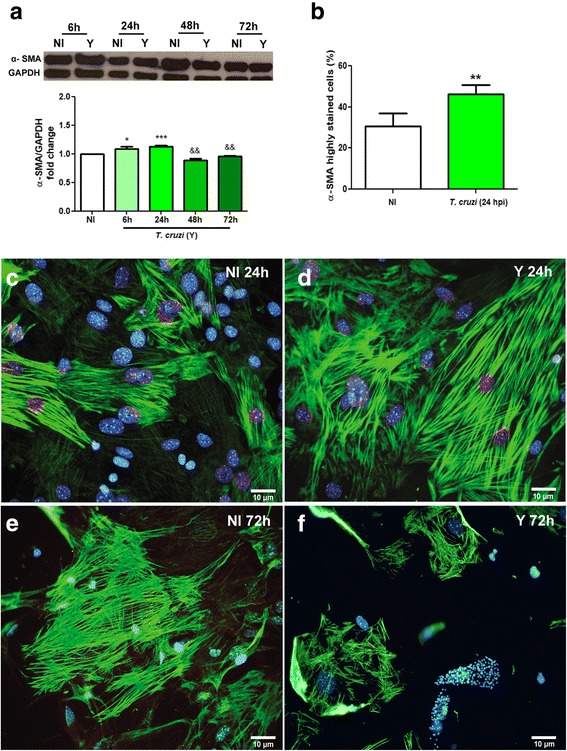Fig. 3.

Fibroblast-myofibroblast transition induced by T. cruzi infection. a Immunoblotting was performed to evaluate α-SMA expression in CFs cultures. α-SMA expression is increased at 6 h and 24 h of T. cruzi infection, followed by a decrease at 48 h and 72 h of infection. GAPDH was used as loading control. b Quantitative analysis of the percentage of SMA-stained cells in CF cultures at 24 hpi. Uninfected cultures showed an average of 30% positivity, whereas infection led to a 1.5-fold increase in the number of stained cells. c-f Immunofluorescence revealed the labelling pattern of α-SMA filaments in CFs cultures. c, e Uninfected cultures. d, f T. cruzi-infected cultures. d At 24 hpi it is possible to observe an increase in α-SMA signal in comparison to non-infected control (c). f At 72 hpi, α-SMA immunoreactivity was drastically altered when compared to non-infected controls (e). DNA staining with DAPI can be observed in blue. Values are expressed as fold change of infected cultures by their respective controls (NI) ± SEM. *P < 0.05 (stimulus); && P < 0.01 (inhibition); ***P < 0.001 (stimulus). One-way ANOVA with Tukey’s post-hoc test of three independent experiments. Abbreviations: NI, non-infected cultures; Y, T. cruzi-infected cultures
